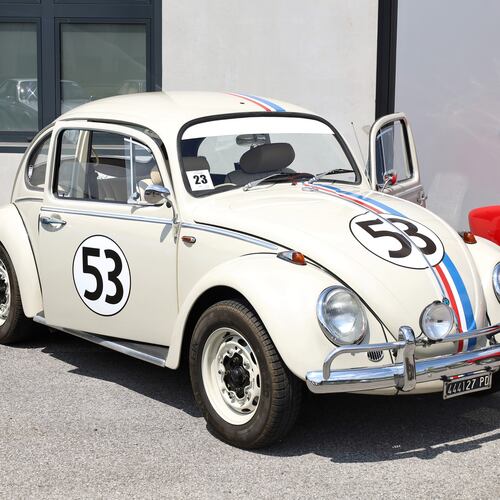Dan O’Hara wanted me to know that he’s a regular, well-balanced suburban family guy.
Even though he’s spent close to $25,000 stocking a year’s supply of freeze-dried food, 200 gallons of water, buckets of batteries, dental tools, blood clotting powder, canisters of rice and oatmeal, firearms, knives and a little gold and silver.
You know, just so his family is prepared if there’s a calamity that knocks out the nation’s electric grid, food supply and modern civilization for a year.
It was the bucket of razor blades and the skid and a half of toilet paper he said he had that made me feel a little more at ease. Who doesn’t want to be comfortable if things go real bad?
“It’s a convenience thing I don’t want to give up,” he said. Plus, “you can barter with it.”
O’Hara rolled into the Cobb Galleria last weekend as the organizer of the Atlanta Preparedness Expo, his first of five stops around the nation this year for what he intends to be a for-profit business. Survivalists and so-called preppers paid $12 at the door to check out gear being sold by vendors of everything from body armor and riot helmets to fire starters, water filtration set ups and seeds.
It’s shopping for people who have bought into the business of fear, even more than has the rest of our anxiety-ridden society.
“There’s more of us out there than you think,” said O’Hara, who lives in Ohio and owns a company that makes and sells office furniture. (“I’m not a wacko. I’m a suit and tie guy,” he told me.)
“Between race, religion, politics and the economy, it is a pretty dangerous world,” he said.
I expected to find very jittery people among the 1,800 paying guests who attended the two-day expo.
Who else would spend lots of money — virtually everyone I spoke with had laid out thousands of dollars over time — to go far beyond the three days of self-sufficiency that the CDC recommends?
Actually, the long-haired guy in shorts and sandals looked very laid back as he perused the booths.
Buzz Baker, a 40-year-old from Dallas, Ga., told me he figures there’s a 30 percent chance he’ll actually need to use most of what he amassed over the last couple years, which includes a year’s worth of food for his family of six. He’s got night-vision glasses and medical gear. He has spent $10,000 in all.
“It’s just early preparedness, just in case,” he told me.
Solar flares coming?
His "just in case" refers to things like horrendous natural disasters worse than Katrina or solar flares that destroy electrical equipment.
I met people at the expo who were currently or recently in the military. I met a young mom who had just purchased a fire starter and told me she’s allowed to use her food stamps to stock up on seeds. I met a 57-year-old carpenter from near Augusta who always carries around a ham radio, just in case, and has staked out a potential fallback site on a friend’s remote farm.
Virtually everyone I talked to who is involved in this stuff has their own measure of what’s reasonable and what’s kooky. Which, I guess, is the way it is with non-preppers, too.
Some preppers, citing the TV series ‘Doomsday Preppers,’ scoffed at others who build bunkers for nuclear Armageddon, fear zombies or already have moved to less populated areas to avoid being overwhelmed post disaster.
“A lot of this is a false sense of security,” Baker said, pointing to the body armor, some of which he owns. You’d have to be willing to cart it around all the time — at work, on vacation — to always be ready, he said.
“Without fear, people don’t sell stuff like this. But there is validity to the fear,” he said. “There is not a product out there that isn’t over-inflated. This industry is no different.”
Baker’s day job, by the way, is brokering materials in the munitions industry.
The firearms industry, he pointed out, rakes in moolah when there’s fear of something: a big terrorist attack, another mass shooting in a school.
Fresh worries about liberals
Or, of course, fresh worries about liberals seeking gun control. The prepping business is the same way. People opened their wallets during the last big Ebola outbreak. And when there were worries about the end of an ancient Mayan calendar, which ratcheted up talk about bad stuff, said Joey Smith, who co-owns a Marietta prepper store, TruPrep, that he boasts is the biggest in Georgia.
“We try not to use scare tactics,” Smith told me. “Our logo is prepare today for a worry-free tomorrow.”
Then there was one of the speakers at a seminar held at the Cobb expo (which offered classes such as “Prepper 101” and a session on how to sew sutures.)
“A lot of people think they are prepared. I’m here to tell you, ‘No, you are not,’” said a speaker, who had worked in disaster areas. “There’s always something more you can buy. There’s always another skill you can learn.”
Sounds like an up-seller’s paradise.
For me, the hard-core prepping thing is too exhausting and expensive. Even though there certainly is a chance that really bad stuff will happen.
It did remind me, though, that I should do better than the couple cases of bottled water in my basement. That’s woefully short of what federal emergency officials suggest my family needs. I’ll work on that. I just hope Doomsday doesn’t last more than three days.
GOVERNMENT RECOMMENDATIONS
It’s not just preppers who say you should stock disaster supplies. The Centers for Disease Contraol says you should have readily available:
At least a 3-day Supply of Food and Water
(One gallon of water per person, per day; foods that are easy to make and won’t spoil, like canned soup, dry pasta and powdered milk.)
Specialized food for babies
Manual can opener
Utensils to prepare and serve meals
At least a three-day supply of all medicines
Any essential medical supplies like syringes, a walking cane, or hearing aids with extra batteries
Soap
Toothbrush and toothpaste
Baby wipes
Contact lenses or glasses
Safety Supplies
First aid kit
Emergency blanket
Multipurpose tool (that can act as a knife, file, pliers, and screwdriver)
Whistle
Electronics:
Radio labeled “NOAA Weather Radio.”
Flashlight
Radio (battery-powered, solar, or hand-crank)
Cell phone with chargers
Extra batteries
Documents
Map, extra cash, key, and copies of important documents such as insurance cards, immunization records and information on on-going medical conditions
A completed family emergency plan, with contact information.
Sufficient food and supplies for pets
Source: CDC. More information is available at: http://emergency.cdc.gov/preparedness/kit/disasters/
What hard-core preppers could spend for semi-Armageddon
There are lots of different estimates, but here are some examples of supplies from one prepper company:
Food for one person for six months: $3,000
(Certain food is supposed to last 25 years. Which, I guess means, that over a lifetime you’d have to replenish it more than once.)
Water filtration system: $20 to $350.
Medical supplies: $200 for a well-equipped pack, including things like chest seals (to close up sucking chest wounds).
Compare that total to what it takes to meet just the 72-hour supply recommended by the CDC: $250 or less.
Source: Joey Smith, co-owner of TruPrep, a prepper store in Marietta
About the Author
Keep Reading
The Latest
Featured


